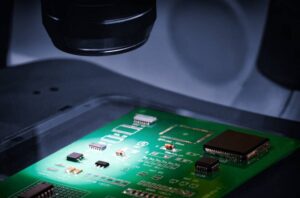The Sequence Lamination PCB Technology and Trends
2023-02-13
With the continuous progress of the times, the development of electronic technology has become more rapid and intelligent. Electronic devices are becoming smaller and smaller, and more and more sophisticated. Ordinary two-layer board may not be able to meet their needs, four-layer or more multi-layer PCBs gradually received attention.
For more than 4 layers of PCB will have the requirements of impedance and lamination structure.
What is sequential lamination PCB?
According to customer requirements, the process of rearranging the board into the physical configuration of the PCB is called PCB manufacturing. Sequential lamination is one of the steps in technical lamination, which is a method of adding layers of copper or some specific metal. For best results, each PCB board is subjected to at least two or more lamination processes.
Selection of sequential lamination structure
Before designing the PCB, we must first determine several parameters.
Board Thickness
For a relatively small area of the PCB, the thickness of the board is not so strict, but for a larger area of the PCB board, if the board is too thin, in the over the oven and over the wave soldering, it is easy to make the board deformed and concave in the middle. Therefore, we should consider this issue when choosing the thickness of the board.
Electrical Layer Order Selection
If we choose to put the CPU and DDR key signals in the top layer, and the DDR reference plane is preferably the GND layer, then our layer order should be TOP, GND, POWER, BOTTOM. Conversely, if we put the CPU and DDR key signals at the bottom layer, the order of the layers should be TOP, POWER, GND, BOTTOM.
Some challenges of sequential lamination
- The limitation of the number of cycles.
In order to get a good lamination result, more than two cycles are needed. But that doesn’t mean it can be done any time you want. You must limit the number of cycles to two to four to prevent assembly defects.
- Aspect Ratio
Aspect ratio is a measurement of the depth of the hole in terms of diameter. Depending on the type of equipment used in the drilling (beam drill or drill press), the ratio will vary and calculations will be based on it. The aspect ratio limits the layers used for different calculations in a multi-layer circuit.
- Cost
Sequential lamination is a spontaneous build process that takes several days to build the required boards. Therefore, the more time it takes to develop the circuit, the more the cost increases gradually.
Advantages of sequential lamination
1. By using sequential lamination, the number of layers of the circuit is reduced
2. Maintains temperature with environmental changes
3. Reduces the mass of copper
4. Reduces the need for buried or blind vias
5. The structure of the circuit board is simplified, making it easy to handle
Conclusion
Sequential lamination provides multilayer stacking for PCBs, and despite some limitations, it is still one of the best processes for circuit board manufacturing. If you want an up-to-date, ready-to-use, modern PCB assembly circuit, PCB lamination technology would be a good choice for circuit design.
If you have any questions about PCB fabrication and assembly, contact us now or send emails to sales@kingpcb.com



